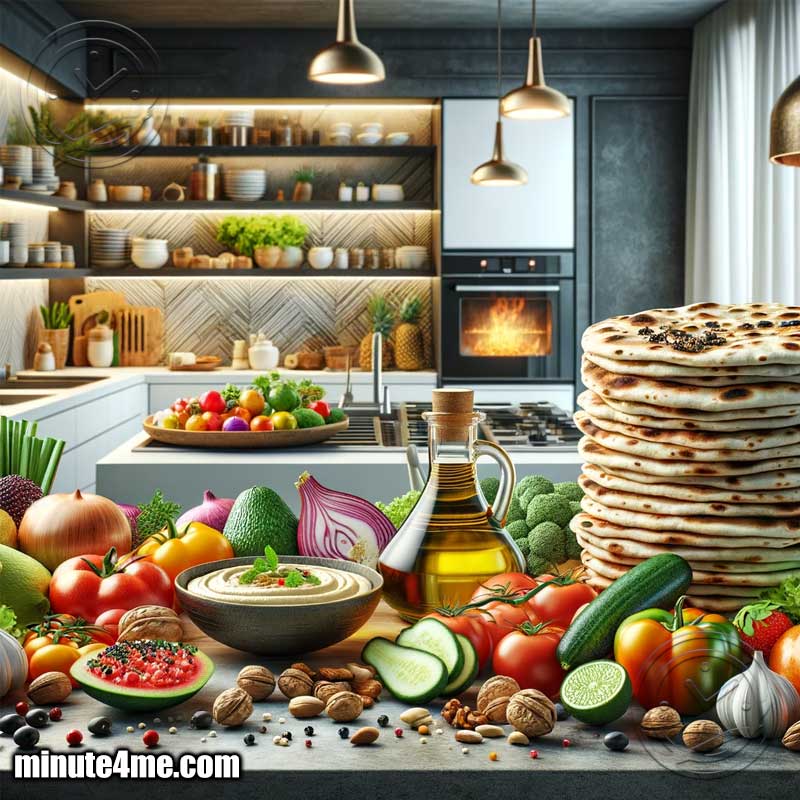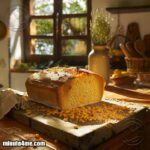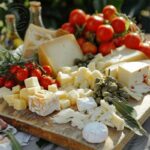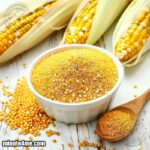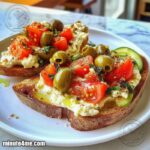Understanding the Mediterranean Diet
The Mediterranean diet isn’t just a diet; it’s a lifestyle embraced around the Mediterranean Sea, known for its nutritional goldmine.
This diet is like the all-star team of foods: whole grains, colorful fruits and vegetables, heart-healthy fats from nuts and olive oil, and proteins from fish and legumes.
It’s about enjoying meals with a gusto for life, all while keeping your health in tip-top shape.
Key Components of the Mediterranean Diet
- Whole Grains: The foundation. Think breads, cereals, pasta, and rice, but the unrefined, full-of-nutrients kind.
- Fruits and Vegetables: The more, the merrier. A rainbow on your plate means a treasure trove of vitamins and minerals.
- Healthy Fats: Olive oil is the superhero here, alongside nuts and seeds.
- Proteins: Lean and mean, from legumes to fish and poultry.
Best Salad Dressing Recipes for Mediterranean Diet
Welcome to the world of zesty flavors and heart-healthy ingredients, where the humble salad dressing becomes the star of the…
Health Benefits Associated with the Mediterranean Diet
Embracing the Mediterranean diet could be like finding the fountain of youth.
Studies link it to a lower risk of heart disease, stroke, and diabetes.
It’s not just about adding years to your life but life to your years, with improved heart health and weight management.
Can You Eat Naan Bread on the Mediterranean Diet?
Let’s get down to brass tacks: Yes, you can enjoy naan on the Mediterranean diet, but there’s a bit of a twist.
It’s like fitting your favorite jeans; sometimes, you need to make a few adjustments.
The key lies in choosing the right ingredients and knowing when to say, “That’s enough for me.”
Is Cornbread on the Mediterranean Diet
Uncover the tantalizing debate: Is Cornbread a Mediterranean Diet delight? Delve into the culinary crossroads where tradition meets health. Ana…
Naan Bread Ingredients
Typical naan ingredients are pretty straightforward: flour, water, yeast, a touch of sugar, and sometimes dairy.
However, to make naan fit into the Mediterranean diet, we need to put on our detective hats.
Here’s the scoop:
- White Flour: The usual culprit in making traditional naan less Mediterranean-friendly. It’s low in fiber and nutrients.
- Yeast & Water: No worries here, they’re neutral players.
- Sugar & Dairy: These ingredients can be minimized or substituted to keep things on the healthier side.
Whole Wheat Naan as a Healthier Alternative
Switching to whole wheat flour is like swapping your soda for sparkling water; it’s a game-changer.
Whole wheat flour brings more fiber, nutrients, and a deeper flavor to the table.
It makes naan not just a delicious side but a nutritious part of your meal.
Here’s why whole wheat rocks:
- Fiber: Keeps digestion happy and helps you feel fuller, longer.
- Nutrients: More vitamins and minerals to fuel your body right.
Are you wondering if you can have dairy on the Mediterranean diet? You're not alone! Many people are curious about…
Portion Control and Dietary Balance
Eating naan on the Mediterranean diet is like enjoying dessert; it’s all about balance and moderation.
Here’s how to keep it in check:
- Portion Size: Think of a quarter or half of a large naan per meal. It’s enough to satisfy without overdoing it.
- Balance It Out: Pair your naan with plenty of vegetables, lean proteins, and healthy fats. It’s about making the naan part of the ensemble, not the solo act.
Incorporating Naan Bread into the Mediterranean Diet
Incorporating naan into your Mediterranean diet is like adding a new character to your favorite TV show; it brings excitement but needs to fit into the storyline.
Creative and Healthy Pairings with Naan
Get creative with your naan pairings.
It’s not just about what’s on top but also what’s on the side.
Here are some ideas that will have your taste buds singing:
- Dips & Spreads: Hummus, tzatziki, and baba ganoush aren’t just delicious; they’re full of healthy fats and proteins.
- Salads: A warm piece of naan can turn a salad into a meal. Imagine a Greek salad with a side of naan. Yes, please!
- Protein: Grilled chicken, fish, or a bean stew can transform a piece of naan into a fork (or spoon).
Making Your Own Mediterranean-Friendly Naan
Making your own naan at home is like a DIY project with a delicious reward.
Here are some tips to make it fit perfectly into the Mediterranean diet:
- Whole Wheat Flour: Start here. It’s your foundation.
- Reduce Sugar: Cut back or use alternatives like honey or agave, but sparingly.
- Olive Oil: Use it instead of butter for that Mediterranean touch.
- Herbs & Spices: Add flavors without the calories. Think garlic, parsley, or cilantro.
Conclusion
Naan bread can happily coexist with the Mediterranean diet, given you choose whole wheat options and practice portion control.
It’s about making mindful choices without missing out on the joy of eating.
So, next time you’re eyeing that naan, remember: whole wheat, moderation, and balance are your keys to fitting it into a healthy Mediterranean lifestyle.
Why not let naan be the canvas for your Mediterranean culinary creations?
